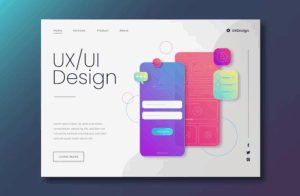In the modern-day digital world, restaurants need to have a website that is not only search engine-friendly but also user-friendly if they are to succeed. SEO and UX are no longer two different things, but have become interdependent now, and are the recipe for success online only when blended! Just imagine it like a perfectly balanced dish. SEO introduces the necessary ingredients (keywords, meta tags, etc) for your site to be seen by search engines, and UX introduces the spices that allow your site to be easy to use, navigate, and interact with.
Suppose you find this perfect restaurant online, only to be redirected to a somewhat disappointing website. The menu is not user-friendly, the pictures are blurry, and you cannot even figure out how to book a table. This is a nightmare for a restaurateur!
If you want to avoid being in this situation, keep reading to understand how you can utilize SEO and UX for restaurants to create a website that is both technically sound and user-friendly!
The Importance of SEO for Restaurant Websites
How Search Engines Work and Why SEO Matters?
Search engines use complex algorithms to crawl, index, and rank websites. When a user searches for a restaurant or a specific cuisine, search engines return a list of relevant results. And SEO makes your restaurant website rank higher in the SERPs. By optimizing your website for search engines, you can increase your online visibility, making it more likely that customers will find and visit your website. Similarly, SEO helps you attract targeted traffic, which means people who are actively searching for restaurants like yours.
Keyword Research and Optimization
Keyword research and optimization are crucial steps in any SEO strategy. Keyword research helps you understand what your target audience is searching for, what problems they are trying to solve, and what questions they are asking. You can utilize tools like Google Keyword Planner, Ahrefs, or SEMrush to identify relevant keywords and phrases. Analyze your competitors’ websites to identify gaps and opportunities in the market. Once you’ve identified your target keywords, you can use them in page titles, meta descriptions and headings to optimize your website’s content.
On-page Optimization Techniques
On-page optimization is essential for a restaurant website because it helps search engines like Google understand the content and relevance of your website. By optimizing your website’s on-page elements, you can improve your search engine rankings, increase online visibility and drive more traffic to your website. You can optimize your images using descriptive alt tags, and use internal linking to help users navigate your website and find relevant information. Don’t forget local SEO for your restaurant! Incorporate location specific keywords in your website’s content and optimize your Google My Business listing, ensuring it is accurate, complete, and up-to-date.
A well-optimized website can lead to more online orders, reservations, and ultimately, more customers walking through your door!

The Role of UX in Creating the Perfect Restaurant Website
Importance of UX in Website Design
User Experience (UX) plays a vital role in website design as it directly impacts how users interact with and perceive your website. A well-designed UX for restaurant websites can make or break the success of your business. Users are more likely to engage with and return to websites that provide a seamless and intuitive experience. A user-friendly interface improves customer loyalty, and maximizes customer lifecycle value. For restaurant websites, UX is crucial in helping users find information, navigation menus, and make reservations.
User-Centred Design for Restaurant Websites
User-centred design is an approach that prioritizes the needs and goals of the user. For restaurant websites, this means designing an experience that caters to the user’s specific needs. By conducting user research and testing, you can gain valuable insights into your target audience’s preferences, behaviours, and pain points. When it comes to design, make sure your website design is consistent with your brand identity. And make it easy for your customers to find what they need – don’t overload them with unnecessary information.
Best Practices for Navigation, Website Structure, and Visual Design
Effective navigation, website architecture, and visual design are essential for creating a user-friendly and engaging restaurant website. Your website structure should be designed in a manner that is not only visually appealing but also easy to navigate for the users. Designing intuitive navigation menus, organizing content in a logical and easy-to-flow structure, and using high-quality visuals that showcase your restaurant’s atmosphere and cuisine is the key to building a strong online presence. Additionally, optimizing your website for mobile devices, with fasting loading times and easy-to-use interfaces can allow you to delight your users and drive real results.
How SEO and UX Work Together?
So, how can you balance SEO and UX on your restaurant website?
- Conducting user research and testing is crucial to understanding your target audience’s needs and preferences. This information can inform design decisions and ensure that your website meets the needs of your customers.
- Using SEO tools can help you analyze and optimize your website’s performance. These tools can help you identify areas for improvement, track progress over time, and provide insights into your website’s ranking on SERPs.
- Creating high-quality, keyword-rich content is essential for attracting and engaging customers, and is the backbone of your SEO and UX strategy. The content should be relevant and unique; it should resonate with your target audience and provide value to your customers.
- Using design elements like images, videos, and graphics can enhance the user experience and make your website more appealing and interactive. However, make sure you always add alt tags with the images and only use high-quality images that do not compromise your website’s loading speed.
- Having a consistent and well structured website design is another important part of your UX and SEO strategy. Organize content logically and intuitively, making it easy for users to navigate and find what they need. The goal should be to enhance usability and engagement.
- Optimizing your website for mobile devices is critical, as more and more customers are accessing websites on their smartphones and tablets. It is important to make sure that your website is responsive, easy to navigate, and provides a seamless user experience across all devices. In fact, Google uses mobile-first indexing now, which means the mobile version of your website is used for search rankings.
- Lastly, slow-loading websites frustrates users, leading to higher bounce rates, and you don’t want that for your restaurant website. Page load speed is a confirmed Google ranking factor. Faster websites are more likely to rank higher in SERPs. Search engines can also crawl and index faster websites more efficiently, improving SEO metrics like page views, bounce rate, and dwell time.

Conclusion
In a nut shell, a website that’s optimized for search engines but neglects user experience is like a restaurant with a great location but terrible food – it may attract customers initially, but it won’t keep them coming back. Therefore, combining SEO and UX for restaurants is crucial for building a high-performing, well-optimized website. By understanding the intricacies of both SEO and UX, you can create a website that not only attracts and engages your target audience, but also drives real business results.
So why settle for a website that doesn’t deliver? Now is the time to take a closer look at your website and make sure you’re on the right track. If you want to quickly analyze your website, you can always reach out to us at CJ Digital. Our team of experts is dedicated to crafting SEO and UX strategies that work together to drive more traffic and boost conversions for your restaurant business.
FAQs
1- What is UX design and how does it apply to restaurant websites?
UX design focuses on creating meaningful and user-centered experiences. For restaurant websites, UX design ensures that users can find information, navigate the site, and take the desired actions with ease. It also makes sure that the website is appealing, as it is crucial for attracting customers.
2- How can I balance SEO and UX on my restaurant website?
By conducting user research, testing and analysis, you can effectively create a website that meets both SEO and UX goals for your restaurant business. You can use SEO tools like SEMrush and Ahrefs to optimize your website content and perform A/B testing to compare and analyze the best website design.
3- What are some common mistakes restaurants make when designing their website?
Some common mistakes include neglecting mobile-friendliness, using blurry or slow-loading images, having a cluttered design, and failing to optimize meta tags or relevant keywords.
4- How can I use UX design to increase the traffic on my website?
In order to drive conversions, make sure you use clear and concise language for your website, have a clear and appealing design with prominent call-to-action buttons, and properly optimize your website for mobile users.
5- What role does content play in SEO and UX for restaurant websites?
High-quality, engaging content is essential for both SEO and UX. Use content to tell your restaurant’s story, showcase your menu, and provide valuable information to your customers. This can improve your website’s visibility in search engines and attract organic traffic.
